Hi-Fi headphones have never been really prominent in our testing grounds, so the Fidelio M2L from Philips that we’re going to present you with in this testing ground isn’t really a new item, but it’s true that in the hyper speed world of Hi-Tech, two years ago is quite old!
We must say that the outbreak of headphones with Lightning connection has ignited our interest for these products, probably because they also contain electronics and are not only, so to speak, a mechanical structure with transductors, which led us to present you with this testing ground.
The Fidelio M2L headphones belong to the Fidelio high-end range from Philips, which contains various sound reproduction elements and four pair of headphones: the M2L obviously; the M2BTBK, which is equivalent in regards to its presentation and drivers (40mm in diameter) to the M2L, but is a Bluetooth wireless model; and two traditional wired models, the X2 and X2HR, equipped with 50mm diameter drivers.
||About the Philips Fidelio M2L headphones|| |Type:|Active closed back Hi-Fi headphones with Apple Lightning connection| |Frequency response:|7-25,000 Hz| |Driver diameter:|40 mm| |Design/Manufacturing:|Netherlands/China| |R.R.P.:|Recommended price of 280 euros| |Contact:|Philips|
Presentation
The Philips Fidelio M2L headphones display a modern and pleasant look, rather discreet, which we like, and without too much clutter, especially since the ear cups can be flattened for transport.
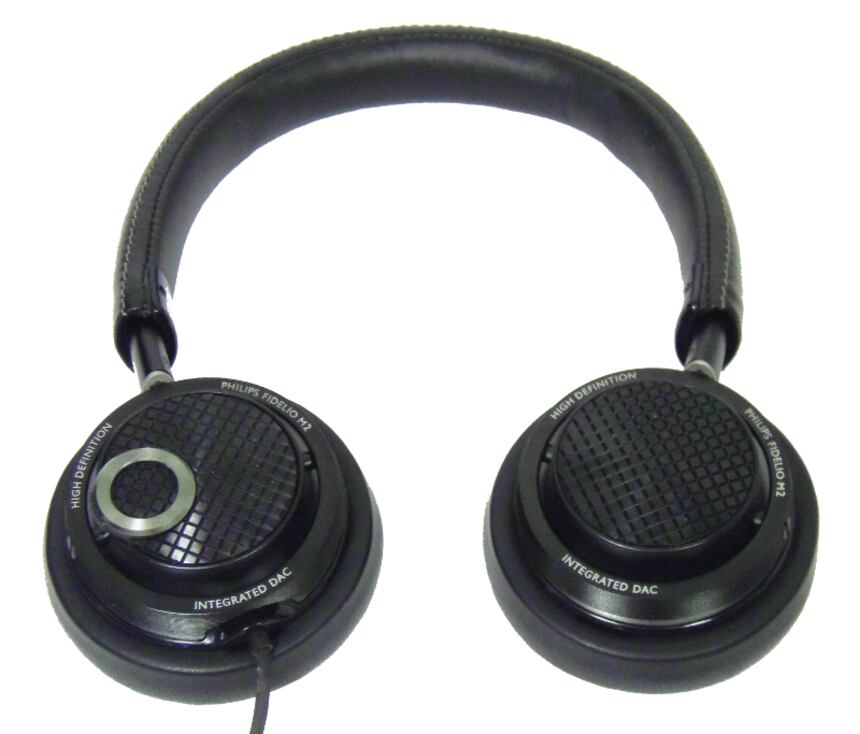
Philips uses black anodized aluminum for the pieces suffering from mechanical constraints (the headband that can adapt in height and in width, and the gimbal offering a range of settings that looks sufficient to us), while the ear cups equipped with memory foam padding are in plastic resin and the headband cladding, slightly padded, is in stitched leather.
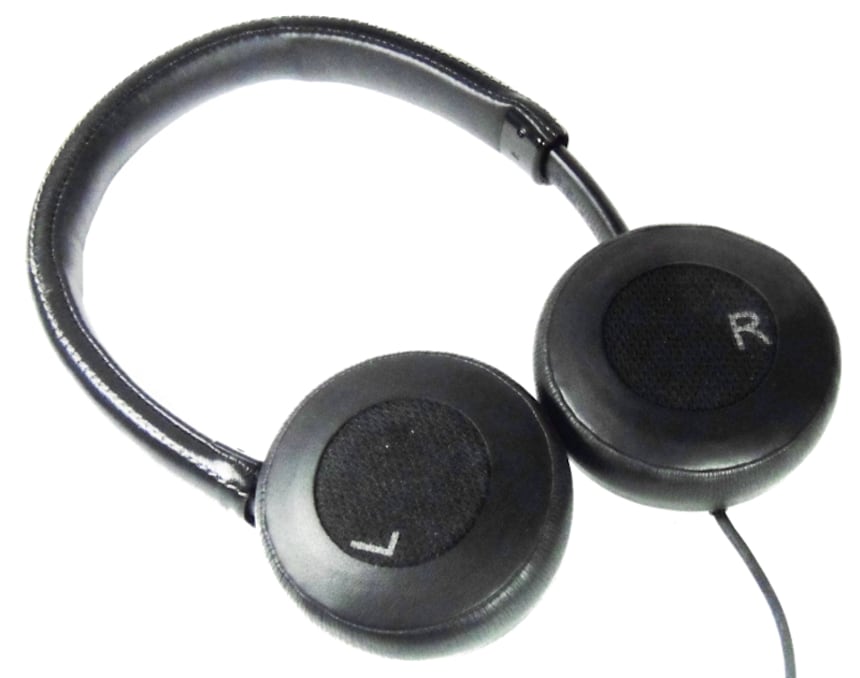
The Lightning cable goes into the right ear cup, which includes the electronics (DAC and amplifier), as well as the volume setting knob using sustained impulses and a tactile zone allowing to go to the next track with a double click.
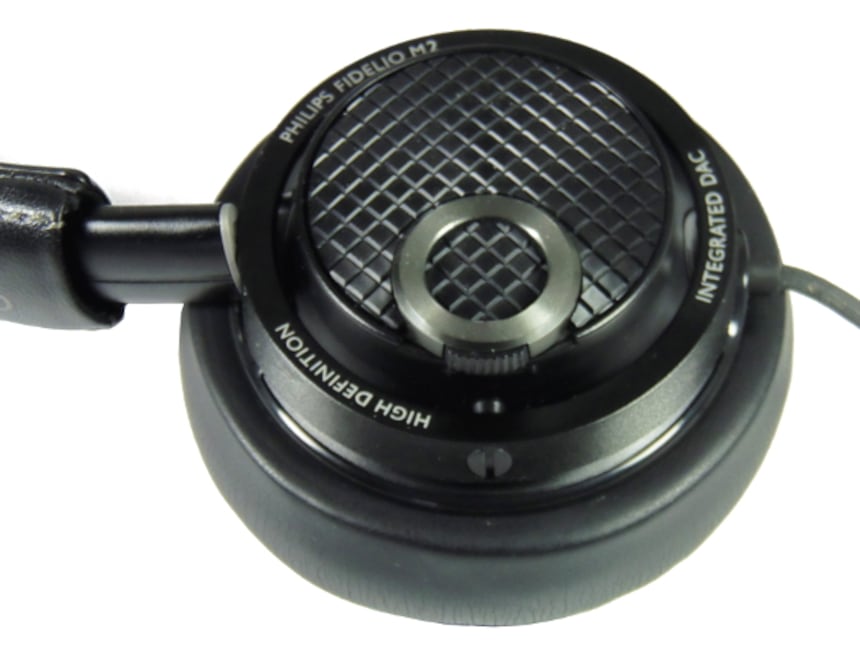
The drivers used on the Fidelio M2L headphones are 40 mm diameter models equipped with a PET membrane (polyester-type plastic which offers great solidity when in tension), paired by hand and using a powerful neodymium magnet, which ensures a lively sound restitution.
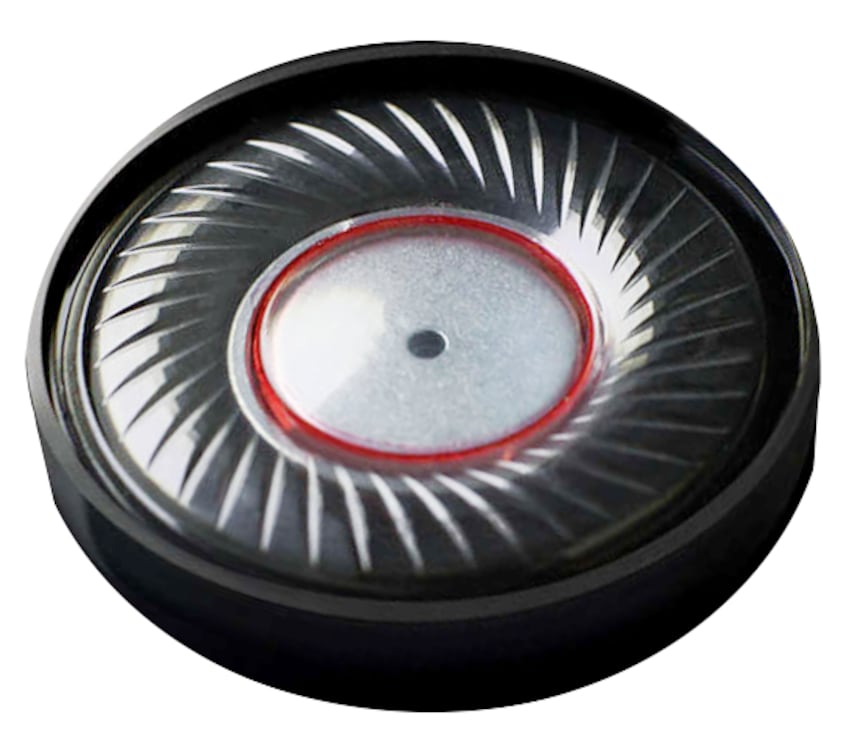
Philips clarifies the use of this driver:
The Fidelio headphone features an acoustic seal that’s a specially designed ribbon lock built into the internal chamber, which eliminates any unnecessary sound leakage and preserves sound details.
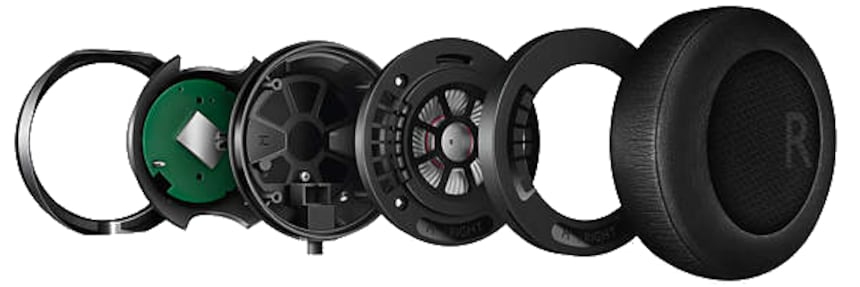
We couldn’t access the electronics without risking damaging the headphones, but it should adhere to the MFi Program (Made for iPhone/iPod/iPad) and includes a low power Cirrus Logic CS42L42 circuit, a 24-Bit/192 kHz coder-decoder, equipped with a 2 x 35 mW in 30 Ω headphone amplifier. A kit is even available at Cirrus Logic to develop headphones connected to the Lightning port.
So, according to the previous statement, all Lightning headphones use the same electronics and only their drivers, their load principle and their aspect differentiate them.
The transmission chain being rigorously identical, if you listen to the same titles as us with the Qobuz app for iOS and the Fidelio M2L headphones, you’ll get the same sound results as we did, and if we don’t agree on those, there must be a hearing problem on one side or the other. Furthermore, the Qobuz application allows for decoding up to 24-Bit/192 kHz with these headphones, since it’s handling the digital audio flow that it sends to the DAC through the Lightning port.
It might be some kind of sound restitution standardization, but it should at least avoid endless discussions as you can see on forums without the listener’s hearing ever being called into question. Here, there’s no discussion.
Use, sound
The Fidelio M2L headphones adapted seamlessly to our head (which is rather big) and the rather high pressure exerted on the ears, associated to memory foam ear cups as well as its rather comfortable headband whose adjustment doesn’t shift, allows it to keep in place and it will not be a problem to go on a run with it. Okay, it fits rather closely but the ears get a bit heated after a while, it’s the price to pay!
Plug and listen, it’s your dream when you get almost daily into driver installations on PC to get a DAC to work, and sometimes it doesn’t even want to work! So, we plugged the Fidelio M2L’s Lightning connector into our iPad while the Qobuz app was running and the headphones immediately broadcasted the playing album.
And these Philips Fidelio M2L are very good, we must admit—and, as isn’t common during our tests—while listening to an album in the Qobuz new releases, Charlotte Gainsbourg’s Rest, and in a musical genre that is out of the ordinary for us! And this is with a great musical pleasure that we discover this beautiful album and the powerful and clear bass of its first title, Ring-A-Ring O'Roses, which supports Charlotte Gainsbourg’s voice, whose presence is as spectacular as her mother’s (!), and reproduced, like the track Lying With You, with a most captivating density.
These very good impressions are confirmed when listening to the beautiful version of Dvořák’s Symphony No. 6 by Yannick Nézet-Séguin conducting the London Philharmonic Orchestra (in a Hi-Res version at 24-Bit/96 kHz). As they say, it sounds great and this is a rich and balanced restitution that provide these Fidelio M2L headphones, with treble that keep their place, and nicely highlighting the density of this interpretation, with especially deep bass chords.
More colorful, more varied in its moods, rich in instruments and choruses and displaying great dynamics, the profane cantata Carmina Burana from Carl Orff performed by the London Philharmonic Choir and the London Philharmonic Orchestra conducted by Hans Graf (Hi-Res version at 24-Bit/44.1 kHz) is reproduced by the Philips Fidelio M2L headphones with all its richness, good treble staccatos and a nice balance on the whole audio spectrum. Furthermore, the dynamic monitoring goes smoothly, even if you have to push the volume almost to its limit if you want to have wholehearted fun!
It also provided an excellent reproduction of the powerful and deep bass of the song L'attrape-nigaud from MC Solaar’s album Géopoétique, yet they didn’t prevent the rest of the sound message from expressing with great ease, especially the voices which remain perfectly clear and intelligible. It’s a beautiful performance!
To conclude, it’s not only the esoteric brands that know how to manufacture products with excellent sound performances, and these Philips Fidelio M2L are the perfect example of that, while remaining affordable. We thus bestow them with our Qobuzissime award, accompanied with a wish: that Philips would release similar headphones compatible with Android!
To follow everything happening here at Qobuz, join us on Facebook!

